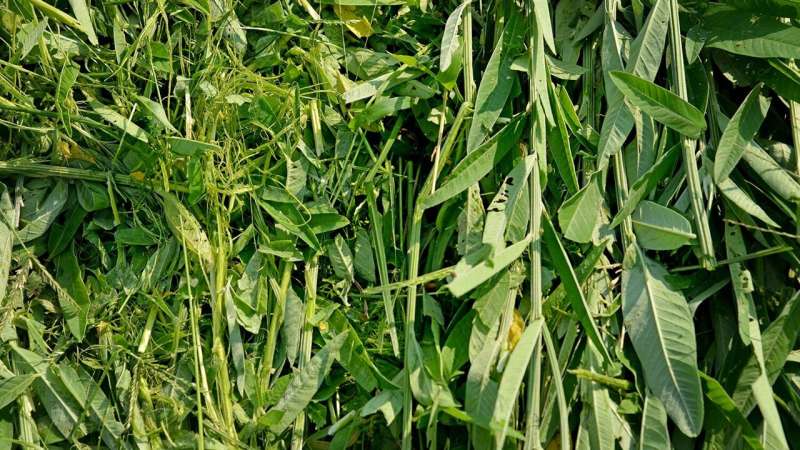Study suggests crop insurance plays small role in discouraging cover crop use in Indiana

A new study suggests that having crop insurance may have discouraged Indiana farmers' use of cover crops to promote soil health, although the results also suggest that the statistically significant effect is small. The findings could help researchers understand more about the unintended consequences of providing subsidies for crop insurance and encouraging more participation in the program.
Rod Rejesus, professor of agricultural and resource economics at NC State and the corresponding author of the research study, says he and coauthors wanted to understand the relationship between crop insurance participation and cover crop use by farmers.
Cover crops are generally used on land prior to planting row crops and have been shown in the academic literature to promote soil health and productivity. However, only a small percentage—about 3.9% in 2017—of U.S. crop land utilizes cover crops, according to AgCensus data.
The researchers accessed satellite data that tracked county-level corn and soybean area that used cover crops in Indiana between 2006 and 2015. They then merged that data with information about land covered by crop insurance.
The study showed that a one percentage point increase in county-level crop insurance participation resulted in a 0.494 percent reduction in cover crop adoption rates.
"Based on our calculations, if 246 average-sized farms increased crop insurance liabilities, only about four out of these 246 would have chosen not to use cover crops," Rejesus said. "These results indicate that crop insurance is not likely a major barrier to cover crop adoption."
Rejesus said that the 2018 Farm Bill affirmed that cover crop adoption is considered a "good farming practice," meaning that its utilization is now treated like other agricultural management practices, which may eliminate some farmer hesitancy in using the practice.
Rejesus adds, however, that the effects of the policy clarification instituted in the 2018 Farm Bill alone may still not strongly convince some farmers to use cover crops. Instead, he says, targeted conservation payments and enhanced outreach programs to farmers describing the benefits of cover crops may have a greater effect.
Lawson Connor of Louisiana State University and Mahmut Yasar of the University of Texas Arlington coauthored the paper, which appears in Applied Economics Perspectives and Policy.
More information: Lawson Connor et al, Crop insurance participation and cover crop use: Evidence from Indiana county‐level data, Applied Economic Perspectives and Policy (2021). DOI: 10.1002/aepp.13206
Provided by North Carolina State University





















